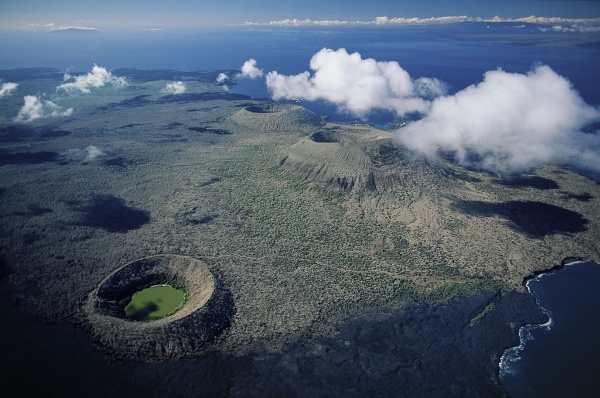×
Visit the Galapagos Islands and get ready to live a dream. See the evolution of the species with your own eyes and get ready to get amazed with the most beautiful landscapes you will ever see.

The Galapagos Islands located in the western Pacific are contoured of one of the most active hot points around of the world. Every few years Basaltic eruptions come up.
The consistencies of the lavas of the Galápagos shields are comparable to those of the Hawaiian volcanoes. They do not form the same volcanic «line» associated with most hotspots. How specifically the islands were created remains a geological mystery, although diverse theories have been declared. Since Charles Darwin’s renowned visit to the Galapagos in 1835, over 60 registered eruptions happened in the islands, from six different shield volcanoes of f the 21 emergent volcanoes, 13 are considered active; the most renowned are the following:
The Wolf Volcano placed at the Isabela Island, it’s the maximum peak in the Galapagos Island expand 1,707m (5,600 ft). It is a shield volcano with a particular characteristic of soup-bowl shape. The last eruption was on May 25, 2015, was inactive for 33 years. The volcano is located in an inhabitant area.
Cerro Azul is a shield volcano situated in the south western sector of Isabela Island and is one of the most dynamic in the Galapagos. Its last eruption was in May and June 2008. Sierra Negra is a large shield volcano at the southeastern end of Isabela Island that ascends to an elevation of 1124 m. It coalesces with the volcanoes Cerro Azul to the west and Alcedo to the north. The volcano is one of the most active in the Galapagos, with the most recent eruption beginning on 22 October 2005, and ending on 30 October 2005.
Alcedo Volcano is one of the six fusion shield volcanoes that fix up Isabela Island. Alcedo, like the other volcanoes in the Galapagos, has been structured as part of the Galapagos hotspot. The volcano is not on the direct way on the hotspot, which is presumed to be adjacent to the island of Fernandina to the western. Although it is still active, with its latest eruption in 1993. Due to the remoteness of Alcedo, historical eruptions are not well documented. An eruption happened between 1946 and 1960, as determined from the variation in photographs. Another eruption in 1954 is now believed to have taken place close to Sierra Negra. Even the 1993 eruption was not viewed at the time and only recorded after an expedition identifies new craters in 1995.
© Copyright 2020 All Rights Reserved by Galasam.com.ec